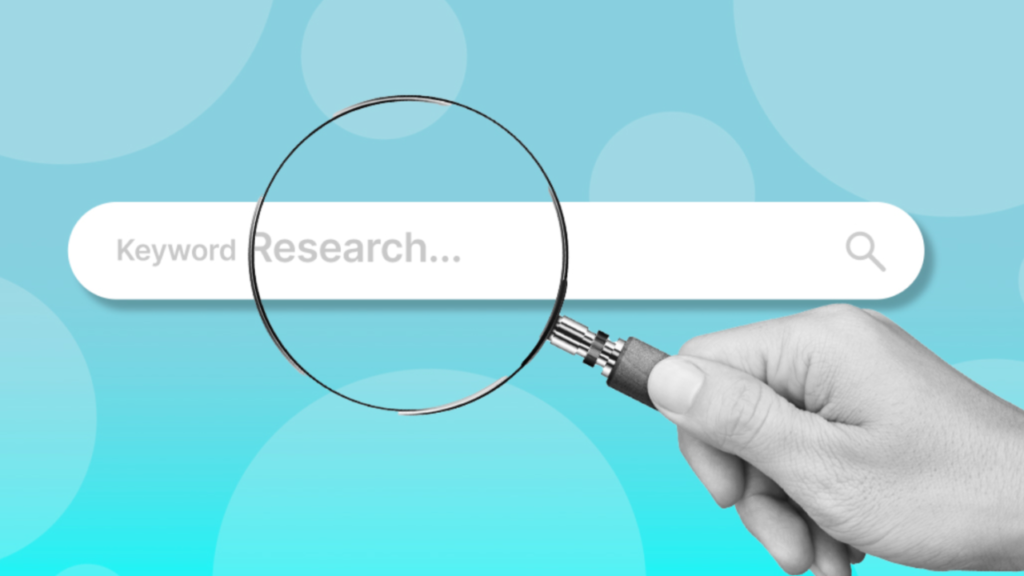Canonical tags are used in HTML to prevent duplicate content issues by requiring a web page’s “canonical” or “chosen” version. They help search engines understand which version of a page to show in search results, ensuring the right page is indexed.
Canonical tags are essential to SEO strategies, with 75% of SEO experts emphasizing their role in managing duplicate content (Ahrefs). Introduced by Google in 2009, canonical tags direct search engines to the preferred version of a page among multiple similar URLs, consolidating ranking signals to a single source (Moz).
This process, known as canonicalization, not only prevents SEO dilution but also enhances user experience by streamlining content paths (SEMrush). For instance, an e-commerce site may have identical product pages with minor URL variations—canonical tags prevent these from competing against each other, protecting search visibility.
A recent study by BrightEdge (2024) revealed that websites using canonical tags experience a 20% higher search ranking on targeted pages due to reduced redundant indexing. This is especially crucial for pages with session IDs, tracking parameters, or dynamic generation, which can unintentionally create duplicates.
Canonical Tags and Their Role in SEO | Recent Updates with Coding Examples For 2025
Using self-referencing canonical tags is crucial in maintaining a clear version of the page for indexing, especially for SEO. With tools like Yoast SEO, you can ensure each page is optimized, and absolute URLs should be used within the html code to maintain a consistent path across your site.
As 2025 is approaching, I thought as an seo expert, I should share my tips with you all!
When implementing multiple canonical tags, specify a source code structure that favors a single self-referencing canonical tag on the main page, ensuring that the correct page will appear in search results.
For instance, if you have a page accessible through multiple URLs (e.g., https://example.com and https://www.example.com), you should add a canonical tag on each version to indicate the main URL. Here’s an example of using a self-referencing canonical tag in HTML:
htmlCopy code<link rel="canonical" href="https://www.example.com">
This directs search engines to consider https://www.example.com as the primary version, consolidating ranking signals and preventing duplicate content issues.
Understanding why canonical tags are important for SEO is essential; the canonical tag best practice is to always specify a canonical URL to prevent dilution of SEO value. A guide to canonical tags can help search engines process your pages efficiently, consolidating signals to one canonical version. Watch out for canonical chains by ensuring that each page can clearly specify the canonical link to the most relevant content, as this does matter for SEO.
For example, let’s say you have two versions of the same content:
htmlCopy code<link rel="canonical" href="https://www.example.com/product-page">
Using an absolute URL like this rather than a relative path (/product-page) ensures the right version is indexed, even if accessed through subdomains or alternate URLs.
To specify canonical effectively, avoid common canonical tag errors that might confuse search engines and tell Google the wrong page to prioritize. Additionally, avoid placing a noindex tag on pages that should rank, as canonical tags should clarify rather than block content.
In terms of canonical tags vs hreflang tags, ensure each serves its role, with hreflang for language and canonical for duplicate prevention. It’s wise to check canonical tags regularly to ensure each tag pointing to the correct version remains clear.
For instance, on a blog post that may be accessible from category, tag, or archive URLs, ensure each version points to the main URL:
htmlCopy code<link rel="canonical" href="https://www.example.com/blog/main-article">
This setup prevents dilution of SEO value by making the primary article URL the focus.
Tags tell search engines which page should rank by having one canonical tag on each URL. Make sure to see the canonical tag in search tools to verify visibility. When using a canonical tag, place it directly within the html to specify preferred versions.
Multiple URLs should consolidate to specify canonical URLs, avoiding errors where a canonical tag would point incorrectly. Using a self-referential canonical tag also ensures clarity in how canonical tags within a domain are handled, as canonicalization is the process that defines the primary URL.
Here’s an example of incorrect canonical tag placement that can cause SEO issues:
htmlCopy code<link rel="canonical" href="https://www.example.com/page1">
<link rel="canonical" href="https://www.example.com/page2">
Only one canonical tag should be present on each page, pointing to a single preferred URL.
Since canonical tags are used for directing SEO weight to a canonical link element, understanding rel canonical helps tags tell search engines about preferred pages. Add canonical tags to your pages as part of your seo strategy to make sure the canonical tag to every page aligns with overall structure.
It’s also important to manage canonical tags on a large site, as the canonical tag tells search engines which content to rank.
Suppose you have a thank-you page that you don’t want indexed but wish to consolidate its authority to the main landing page:
htmlCopy code<meta name="robots" content="noindex">
<link rel="canonical" href="https://www.example.com/landing-page">
This combination tells search engines not to index the thank-you page but to attribute its signals to the main landing page, enhancing SEO efficiency.
If there are different canonical pages with similar content, use canonical tags for seo to merge signals effectively. Setting a canonical tag remains of high importance for seo, as it eliminates redundancy by indicating a canonical URL. This is an important ranking factor to clarify your content hierarchy.
For example, if you have English and Spanish versions of the same page, use canonical and hreflang tags as follows:
htmlCopy code<link rel="canonical" href="https://www.example.com/en/page">
<link rel="alternate" hreflang="es" href="https://www.example.com/es/page">
<link rel="alternate" hreflang="en" href="https://www.example.com/en/page">
This setup specifies the English page as canonical while directing Spanish-speaking users to the Spanish version, improving user experience and SEO.
Always check the canonical path, especially when a noindex and canonical tag are present on the same page. Learn what to know about canonical tags to improve your seo practices and avoid conflicts. Since canonical tags help search engines index your most important URLs, the canonical page will be crawled with more focus.
If a page contains the canonical tag incorrectly (e.g., pointing to an outdated URL), correct it by updating the canonical URL:
htmlCopy code<link rel="canonical" href="https://www.example.com/updated-page">
Using this tool ensures your SEO strategy aligns with the right version of each page, maintaining a strong SEO foundation.
Using absolute URLs in canonical tags also adds reliability, as a canonical tag on a page is more stable and clear for engines. Many SEOs recommend to use self-referencing canonical tags to confirm the right page when unable to see the canonical directly.
When placing a tag on your page, check that the page contains a canonical tag and aligns with your strategy, preventing any canonical tags pointing to irrelevant versions. Optimizing canonical tags can enhance your seo performance by creating a strong link to the main URL.
So, remember to put a canonical on your main pages, and use the url inspection tool to double-check for errors, ensuring Google doesn’t ignore any canonical tags.
By ensuring every main page has a canonical tag, as shown below, search engines can accurately crawl and index your preferred URLs:
htmlCopy code<link rel="canonical" href="https://www.example.com/important-page">
This example helps organize content and directs SEO value to the pages that matter most for search rankings.
Be cautious with canonical urls without additional URLs, as canonical tags without proper configuration can lead to SEO issues. Integrate canonical tags and hreflang tags for language-based pages, and utilize seo plugins like Yoast for automation. For many websites, free seo tools can offer support for canonical tag management, bringing better results in search engine visibility.
What Are Canonical Tags?
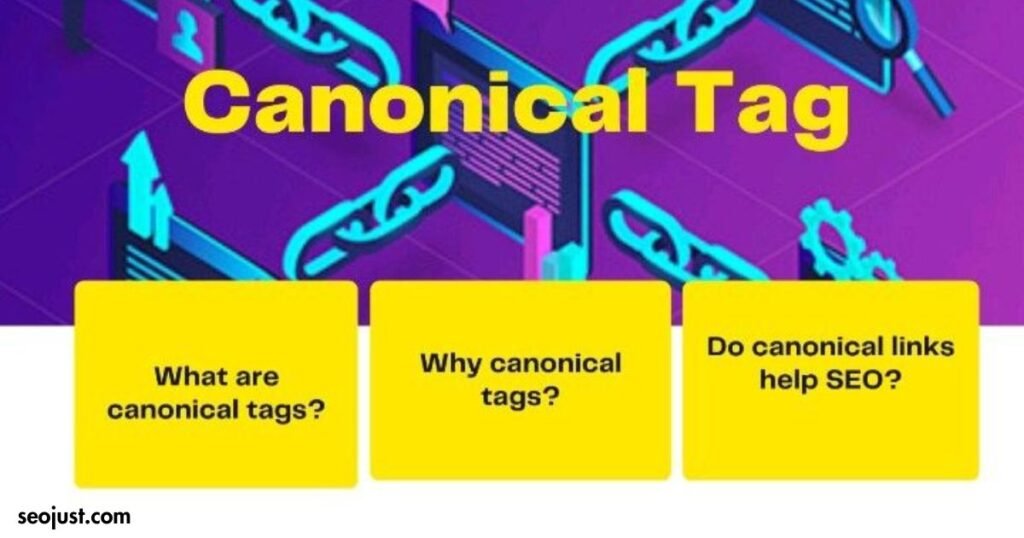
Definition and purpose
Canonical tags, officially referred to as “rel=canonical,” act as a signal to search engines, classifying the master copy of a web page. Their primary purpose is to inform search engines which version of a content-repeated page to index and present in search results. This tool is invaluable in the digital space where content can be accessed through various URLs, leading to potential confusion for search algorithms.
Webmasters help search engines consolidate ranking signals to the specified URL by defining a canonical URL.
This, in turn, aids in maintaining the site’s search relevance and visibility in scenarios where content replication is strategic or unavoidable—such as in e-commerce platforms where a product may be listed under multiple categories—canonical tags protect the integrity of the site’s SEO performance by flagging which page should be considered as the original or primary source.
How canonical tags work?
Canonical tags operate on a straightforward yet powerful principle. Once a canonical tag is placed in the HTML head of a webpage, it serves as a guide for search engines by pointing out the content’s preferred or “canonical” version.
When search engines crawl multiple pages with similar or identical content, the canonical tag informs the search algorithms which specific URL should be regarded as the main one for indexing purposes.
For example, if a website has several pages that display the same article accessible through different URLs, a canonical tag can be used to declare one of these URLs as the primary version.
This does not prevent users from accessing other pages, but it tells search engines to focus on the canonical URL when indexing. Consequently, all external links, social shares, and other SEO metrics consolidate under the canonical URL, strengthening its search engine ranking.
In essence, canonical tags facilitate the orderly management of potentially duplicate content, ensuring that SEO efforts are concentrated on elevating the visibility of the designated primary source in search results.
Also Read: Optimizing for Excellence: Mastering the Art of SEO Audit and Analysis
The Role of Canonical Tags in SEO
Preventing duplicate content issues
One of the most critical functions of canonical tags is their role in preventing duplicate content issues, a common challenge in SEO. Duplicate content refers to content blocks within or across domains that completely match or are noticeably similar.
Search engines, striving to provide the best user experience, avoid showing multiple versions of the same content in search results.
This is where the issue arises without clear guidance on which version of a content piece is the favorite or “canonical” one; search engines might spread SEO value across all duplicates, thinning the potential ranking power of the content.
Using a canonical tag, webmasters effectively communicate to search engines which version of the content should be considered the original, or most authoritative. This ensures that search engines index and rank the canonical URL, while other URLs with identical or highly similar content are not considered separate entities with divided ranking potential.
The canonical URL aggregates the SEO value of all duplicates, maintaining a website’s search engine relevance and visibility. This process is vital for websites that generate duplicate content, such as e-commerce sites with multiple pages displaying the same product. Canonical tags thus serve as a dangerous tool in a webmaster’s arsenal to maintain SEO honesty in the face of potential duplicate content issues.
Consolidating link signals for similar or duplicate pages Handling
link signals for similar or duplicate pages are central to optimizing a website’s SEO strategy. When multiple pages with comparable content exist, there’s a risk that backlinks—and by extension, SEO value will be spread thinly across these variations rather than being concentrated to boost the ranking of one authoritative page.
This dispersion of link equity can significantly dampen a site’s SEO performance because search engines, like Google, value the quality and quantity of backlinks to a page as a major ranking signal.
Canonical tags come into play by effectively consolidating these link signals, rerouting the SEO value from multiple similar or duplicate pages to a single, canonical version.
This process ensures that the chosen canonical page accumulates all the link equity from external sources that might otherwise have been distributed among multiple pages. Essentially, rather than having several weaker pages competing for attention, the website benefits from having one stronger, more visible page.
This consolidation enhances the page’s ability to rank higher in search engine result pages (SERPs) and overall user experience by reducing redundancy and confusion over which page is most relevant or authoritative.
By utilizing canonical tags to consolidate link signals, webmasters can significantly streamline their SEO efforts, focusing on amplifying the visibility and ranking of one primary page. This strategic alignment of SEO resources simplifies content management and maximizes the impact of external links, elevating a website’s search engine standing and visibility to potential visitors.
Improving user experience and site navigation
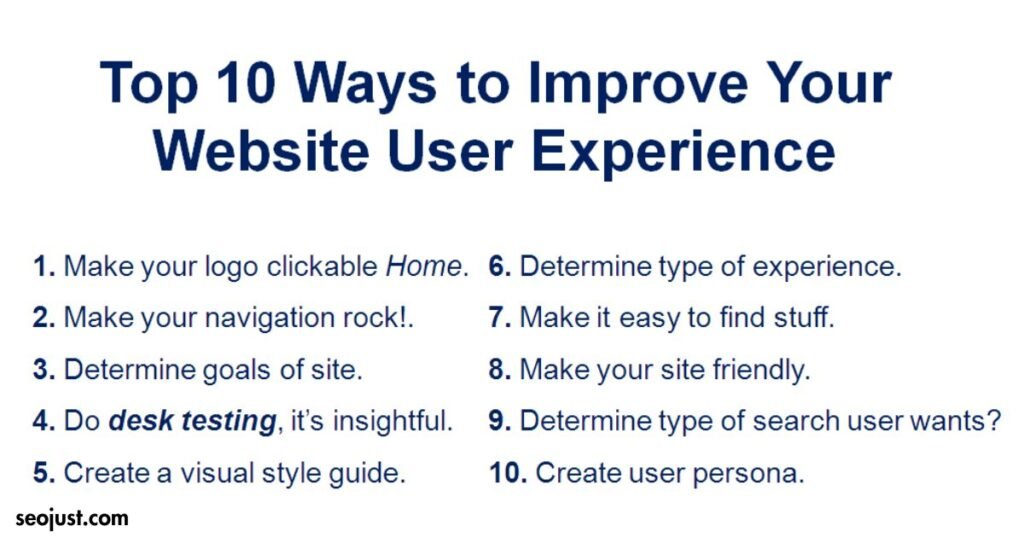
Attractive user experience (UX) and streamlining site steering are pivotal activities that directly contribute to a website’s success. By implementing canonical tags effectively, site administrators can significantly reduce user confusion caused by encountering multiple versions of the same page.
This is important for ensuring users find what they seek quickly and professionally, without struggling to navigate duplicate content. A clear, streamlined path through a website improves the overall user experience and inspires longer visits and deeper appointments with the site’s content.
Canonical tags are vital in purifying site steering by signaling to search engines which versions of content pages should be ordered. This means that users are more likely to be directed to the most relevant and imposing page via search engines, making their search experience more straightforward and rewarding.
Also, by joining link equity in one primary version of a page, canonical tags help elevate that page’s visibility in search results, making it easier for users to discover the content they’re searching for.
Finally, the strategic use of canonical tags contributes to a more unified and user-friendly website structure.
This not only aids in retaining existing users by developing faithfulness through a positive browsing experience but also attracts new visitors by improving the site’s search engine ranking and visibility. By prioritizing the user’s directional ease and satisfaction, websites can ensure a more attractive and efficient interaction for everyone who visits.
Also Read: SEO For Real Estate: Ultimate Guide to Improve Search
How to Implement Canonical Tags
Identifying Scenarios That Require Canonical Tags
Identifying when to use canonical tags is vital for keeping a website’s SEO healthy. These tags are not always essential, but certain situations benefit from their application to prevent content duplication issues and improve search engine understanding. Key scenarios that necessitate the use of canonical tags include:
- Syndicated Content: When syndicated or republished from another source, a canonical tag should point to the original content. This ensures that search trains identify the source as the most commanding version of the original content’s SEO value.
- E-commerce Product Variations: E-commerce websites often have discrete pages for products that are basically the same but vary somewhat in size, colour, or other attributes. Canonical tags can help search engines understand that these pages are closely related, guiding SEO equity to a single, preferred version and reducing joblessness in search results.
- Session IDs in URLs: Websites that generate unique session IDs for users can create duplicate content issues, as the same page content could be opened through multiple URLs. Applying a canonical tag identifies the preferred URL for search engines to index, avoiding thinning link signals.
- Print-Friendly Versions of Web Pages: Search trains can see these as duplicate content if a site provides print-friendly pages. A canonical tag should point back to the original, non-design version of the content to combine SEO value.
- Tracking Parameters in URLs: URLs that include the following parameters for analytics or marketing resolves can create duplicates of a similar page. Using canonical tags helps search engines understand which URL type is the original and should be indexed.
Step-by-Step Guide on Adding Canonical Tags to Web Pages
- Identify Duplicate Content: Review your website to classify duplicate or similar content that can damage your SEO. This can include product pages with minor variations, content accessible via multiple URLs, or pages with both mobile and desktop versions.
- Select the Preferred URL: For each set of duplicate content, decide which URL you want search engines to index and prioritize. This URL will serve as the “canonical” or authoritative version. It should typically be the version that is most comprehensive and user-friendly.
- Generate the Canonical Tag: Create the canonical link element to be added to the duplicate pages `<head>` section. The tag should look like this:
```HTML
<link rel="canonical" href="https://www.example.com/preferred-url-page" />
```
Change `https://www.example.com/preferred-url-page` with the URL of your selected canonical page.- Place the Tag in the HTML: Supplement the canonical tag into the `<head>` section of the HTML of all non-chosen page versions. Ensure the tag returns to the preferred URL you identified in step 2.
- Verify the Implementation: Use a tool like Google Search Console or conduct a site crawl to verify that the canonical tags have been implemented correctly. Check to ensure that they properly point to the favorite URLs and that search engines can access them.
- Monitor the Results: After applying canonical tags, monitor your site’s performance in search engine results pages (SERPs) to ensure that the right version of each page is being indexed and shown. Watch for any unexpected changes in traffic or rankings, and adjust your canonical tags as necessary.
Common Mistakes to Avoid When Using Canonical Tags
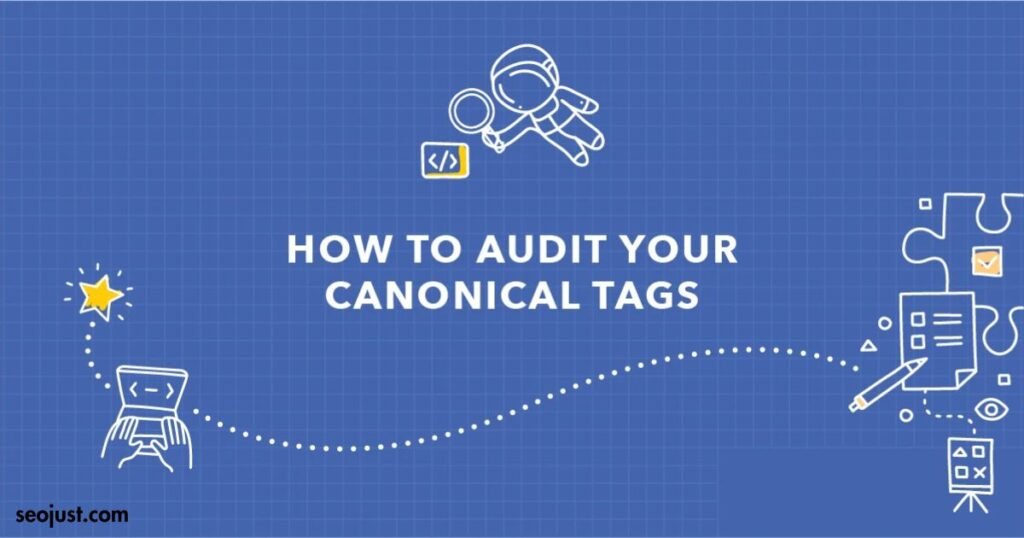
While canonical tags can meaningfully improve a website’s SEO, several mutual pitfalls undermine their efficiency. Awareness and avoiding these mistakes are crucial for ensuring that your canonical plan delivers the desired results.
- Incorrectly Choosing the Canonical Version: One of the most critical errors is selecting the correct URL as canonical. This choice should be based on the page’s relevance, content value, and user experience. Picking a less relevant or lower-quality page can negatively impact your SEO efforts.
- Inconsistencies Across Pages: Ensure that the canonical tag on a preferred page points to itself, and that all duplicate pages point to the same preferred URL. Variations in canonical links can confuse search engines and dilute the SEO value.
- Using Canonical Tags Instead of Redirects for Deleted Pages: If a page is removed and its content is compounded with another page, a 301 redirect, not a canonical tag, should be used. Canonical tags are not suitable for managing deleted or significantly altered content.
- Neglecting to Implement Tags Across All Duplicate Content: Failing to place canonical tags on all versions of duplicate content can lead search engines to index undesired page versions. It’s essential to map out and tag all duplicates thoroughly.
- Forgetting to Update Canonical Tags After URL Changes: If the URL of a chosen page changes, it’s vital to update the canonical tags by filling it out. Failure to do so can result in broken links and lost SEO value.
- Using Canonical Tags to Group Unrelated Content: Canonical tags should only be used for carefully related or duplicate content. Applying them across pages with distinct content can lead to improper indexing and a loss in traffic.
- Excessive Use of Canonical Tags: Over-reliance on canonical tags, especially on pages that aren’t duplicates or similar, can dilute their effectiveness. Use them judiciously and where it makes clear sense from an SEO perspective.
Canonical Tags in Complex Website Structures
Handling Canonical Tags Across Domains
When handling a web company that extends across multiple domains, it’s crucial to understand how to use canonical tags successfully to maintain SEO integrity. This situation arises in contexts such as businesses hosting a separate blog on another domain, international companies with country-exact sites, or when content is syndicated across different domains.
Implementing canonical tags across domains allows webmasters to signal to search engines which domain hosts the original content, hence preserving the SEO value of the content while avoiding penalties for duplicate content.
To handle canonical tags across domains, follow these steps:
- Identify Cross-Domain Duplicate Content: Identify duplicated content across multiple domains. This could be the same product descriptions on different country sites or articles reposted on a content syndication platform.
- Decide on the Original Content Domain: Choose which domain hosts the original or most commanding version of the content. This decision should be founded on factors such as the content’s original book date, the domain’s authority, and where the most complete version of the content resides.
- Generate Cross-Domain Canonical Tag: Create a canonical link element similar to treatment canonical tags within a single domain. However, in this case, the URL in the canonical tag will point to the page on the original content domain, even if the tag is located on a page hosted on a dissimilar domain.
```HTML
<link rel="canonical" href="https://www.originaldomain.com/original-content-page" />
```- Implement the Tag on Duplicate Content Pages: Place the canonical tag in the `<head>` section of the HTML on all duplicate content pages hosted on different domains, confirming it points back to the original content’s URL on the selected domain.
- Verify Cross-Domain Canonical Tags: Use tools and methods to confirm that search engines recognize and respect the cross-domain canonical tags. It’s essential to ensure that these tags are correctly implemented and accessible by search engine crawlers.
- Monitor and Maintain: Continuously monitor the SEO impact and ensure no unintended consequences arise from the implementation. Adjust your strategy as necessary based on performance data and any changes in content distribution across the domains.
Managing Canonical Tags in Dynamic and Multi-Language Websites
Dynamic websites, particularly those offering content in multiple languages, face unique challenges in managing canonical tags effectively. These websites often generate multiple URLs for the same content due to user sessions, tracking parameters, or content being accessible in different languages. To manage canonical tags in such environments:
- Identify Dynamic URL Parameters: First, identify the URL parameters that lead to content duplication, such as session IDs or tracking codes. Use the canonical tag to indicate the preferred URL version without these parameters.
- Use Hreflang Tags for Language Variations: Pair canonical tags with Hreflang tags for multi-language sites. This combination informs search engines about a page’s language and geographic targeting while signaling the preferred version of duplicate content across languages.
- Canonical Tags for Pagination and Filters: Active websites, particularly e-commerce sites, often use pagination and filtering to create multiple URLs for the same content. Use canonical tags to point to a ‘view all’ page or the first page of a paginated sequence as the canonical version, if it offers the best user experience.
Canonical Tags and Other SEO Strategies
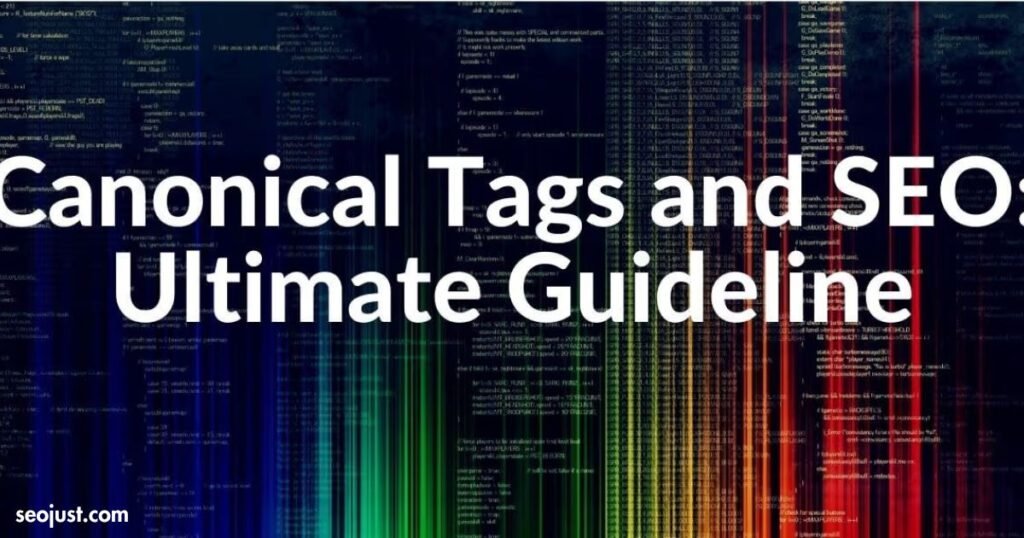
The relationship between canonical tags and hreflang tags is essential for webmasters to optimize their websites for a global audience. Canonical tags require the original version of content to search engines, helping avoid penalties related to duplicate content. On the other hand, hreflang tags inform search engines about a web page’s linguistic and geographical targeting; confirming that the correct version of the content is shown to users based on their location and language favorites.
When used together, these tags can significantly enhance a website’s SEO performance in international search results. They ensure that search engines understand the relationship between duplicated content across different languages or regional variations, directing users to the most relevant version of a page. Thus, implementing canonical and hreflang tags is essential for websites with content targeting multiple countries or languages, ensuring both the avoidance of duplicate content issues and the correct localization of web content.
Integrating canonical tags with sitemaps and robots.txt
Integrating canonical tags with sitemaps and the robots.txt file improves the usefulness of a website’s SEO strategy by providing search engines with more exact directives on content indexing. When canonical tags are included in a sitemap, they guide search engines toward the authoritative version of a webpage, ensuring that the correct URL is indexed and plummeting the chances of duplicate content matters.
This practice is particularly beneficial in consolidating page ranking signals towards the preferred URL and optimizing search visibility. Meanwhile, the robots.txt file can prevent search engines from crawling duplicate pages not marked as canonical, further rationalizing the crawling process toward the most valuable content.
However, using the robots.txt file sensibly is crucial, as improper use can fortuitously block important content from being indexed. By mixing canonical tags with sitemaps and suitably configuring the robots.txt file, webmasters can achieve a more organized and efficient approach to directing search engine traffic, improving the overall SEO presentation of their websites.
Monitoring and Testing the Impact of Canonical Tags
Tools and methods for tracking
Effective tracking of the impacts of canonical tags is crucial for optimizing your SEO strategy. There are several tools and methods available that can help in this process:
- Google Search Console: This is a fundamental tool for monitoring your pages’ performance in Google search. It provides data on search traffic, the performance of different keywords, and how your content is indexed, including issues related to canonical tags. It can help detect if Google recognizes your canonical URLs as intended.
- Crawling Software: Tools like Loud Frog SEO Spider allow you to crawl your website as a search engine would. This can be very useful for identifying canonical mistakes, such as pages not referring back to the canonical URL or canonical links being damaged.
- Analytics Tools: Web analytics tools (like Google Analytics) can be arranged to track the presentation of specific URLs, including those marked as canonical. This can help understand traffic patterns and whether canonical URLs effectively replace their duplicates in search engine rankings.
- A/B Testing: Conducting A/B tests on pages with and without canonical tags can provide direct insights into the efficiency of your canonical plans. This helps refine your approach to handling duplicate content and optimizing SEO.
By employing these tools and methods, webmasters can gain valuable insights into how well their canonical tag strategy performs, making adjustments as necessary to ensure that search engines index and rank their content as intended.
Tips for testing effectiveness and troubleshooting issues
To effectively test the impact of canonical tags and troubleshoot potential issues, consider the following tips:
- Regularly Review Canonical URLs in Google Search Console: Verify that Google has correctly identified and indexed your preferred canonical URLs. Look out for any warning messages or errors related to canonical links.
- Inspect URL Indexation: Use tools like the `site:` search query in Google to check if non-canonical pages are being indexed over the preferred URLs. This can signal issues with the recognition of canonical tags.
- Analyze Traffic Fluctuations: Monitor traffic patterns to your canonical and non-canonical pages. A significant amount of traffic to non-canonical pages might indicate ineffective canonicalization.
- Ensure Consistency Across Tags: Check for consistency between canonical tags and other SEO directives, like hreflang tags and robots meta tags, to prevent conflicting signals to search engines.
- Test Response Codes: Use crawling software to ensure canonical and non-canonical URLs return the correct HTTP status codes. Non-canonical URLs should not return error codes.
- Seek Patterns in Errors: If issues are detected, look for patterns. Common problems are often traced to systemic errors in canonical tags applied site-wide.
- Engage in Split Testing: If uncertain about the efficacy of canonical tags in specific scenarios, consider conducting controlled A/B tests to measure their impact on search engine visibility and user engagement.
By leveraging these tips, webmasters can more accurately assess the effectiveness of canonical tags and swiftly address any issues, ensuring that search engines correctly understand and represent their website’s content.
Conclusion
The strategic implementation of canonical tags is a fundamental aspect of modern SEO best practices, serving as a vital tool for webmasters to manage duplicate content. By accurately indicating the preferred version of a webpage, canonical tags help search engines understand which URLs should be indexed, thereby averting the pitfalls of content duplication, such as diluted page rankings and inefficient use of crawl budget. Integrating these tags with other SEO elements like sitemaps, hreflang tags, and the robots.txt file can significantly enhance a website’s search visibility and user experience.
Monitoring and testing the impact of canonical tags through tools like Google Search Console, SEO crawling software, and web analytics platforms are crucial for refining SEO strategies and ensuring that the intended pages gain prominence in search engine results. The guidelines and methods discussed herein offer a comprehensive approach to leveraging canonical tags effectively, thereby optimizing web content for both users and search engines. As search algorithms evolve, staying proactive in implementing and revisiting these SEO practices will be key in maintaining and improving a website’s search engine ranking and visibility.




